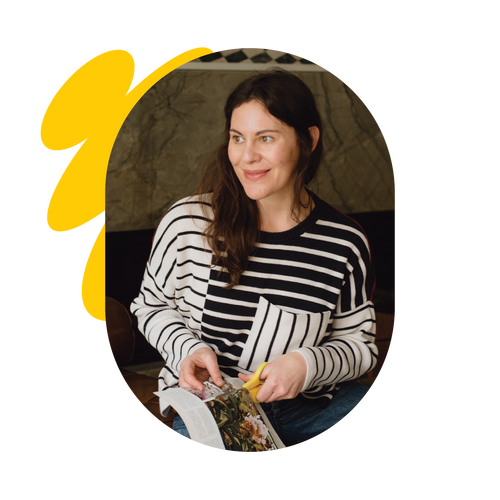Alma Thomas(1891-1978) was an American painter inspired by the natural world, who often used vibrant colors and a signature brushwork to create her paintings. We love her for many reasons, but mostly because of the strong sense of exuberance in her work, the fact that she was an art educator for most of her life, and the fact that she did not dedicate her career to art until she was in her 70s. Thomas had MANY accomplishments in her career: she was the first graduate from Howard University’s fine arts program – and the first Black woman to earn an arts degree.
In 1972, she was the first Black woman given a solo show at the Whitney Museum at age 81, and the first to have her work added to the White House Collection of Art. A few words that come to mind when looking at her signature mosaic-like paintings are nourishing, joyful and all-encompassing. Thomas was influenced by painters in the Washington Color School including Morris Louis, Kenneth Noland, and Gene Davis, and this lifelong study of color theory is demonstrated throughout her body of work.

The Eclipse 1970, acrylic on canvas, Smithsonian American Art Museum, Gift of the artist, 1978.40.3
For 35 years and in a segregated Washington D.C., Thomas not only taught art, but she empowered her students to see beauty in the everyday. It was not until the 1960s when she was in the seventh decade of her life that she decided to dedicate her career to art.
Nature was Thomas’s muse, and even during the height of the Civil Rights movement she focused on the awe-inspiring and uplifting quality that the natural work evokes. As she explained:
“Man’s highest inspirations come from nature. A world without color would seem dead. Color is life. Light is the mother of color. Light reveals to us the spirit and the living soul of the world through colors.”








